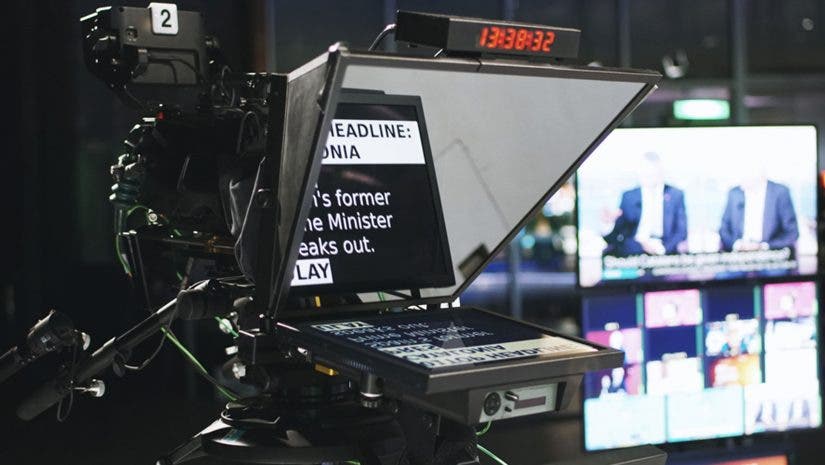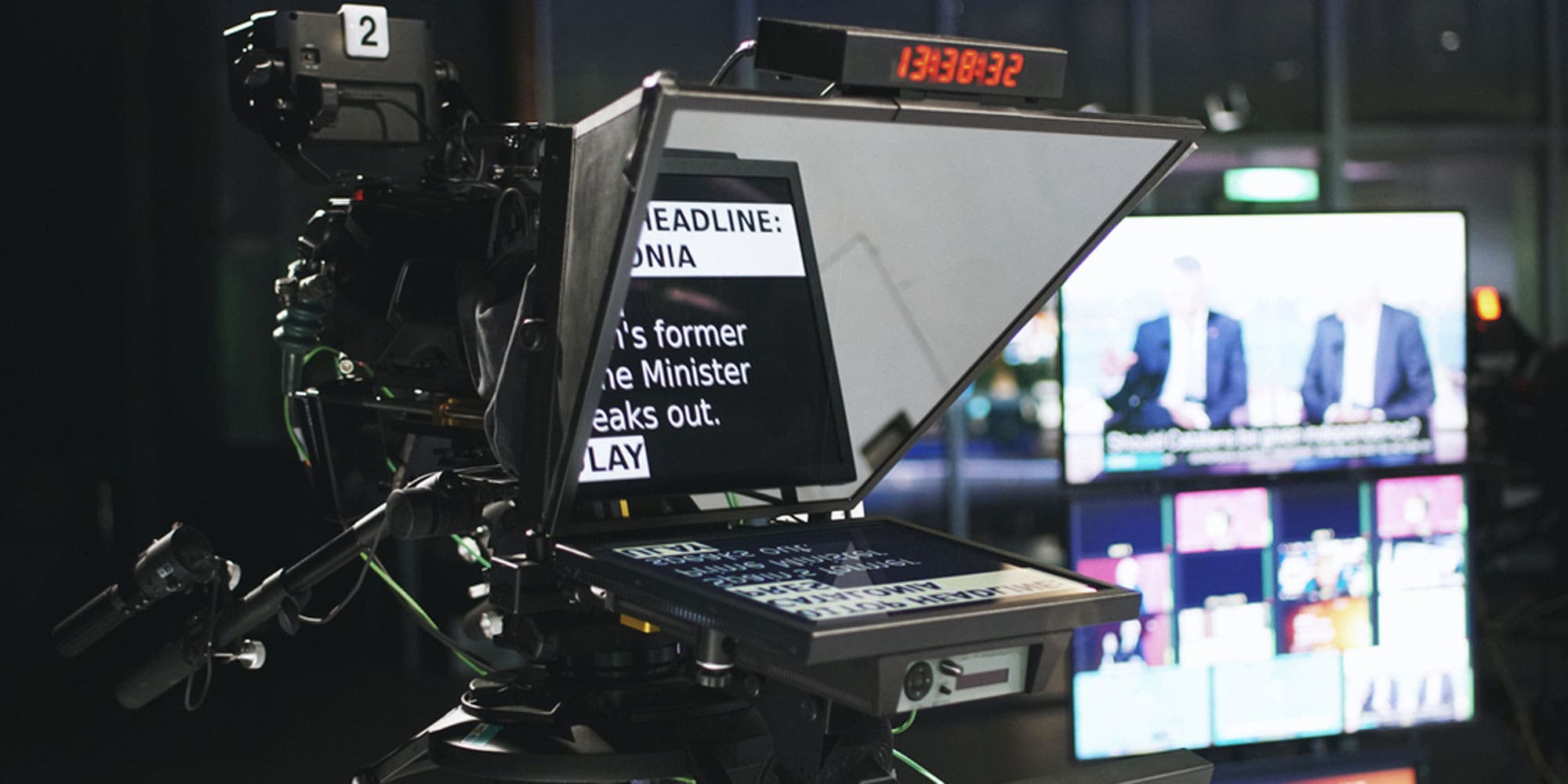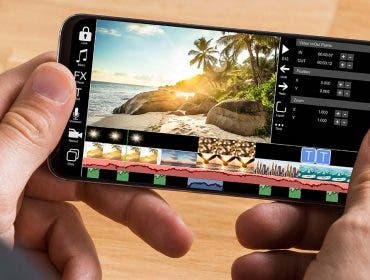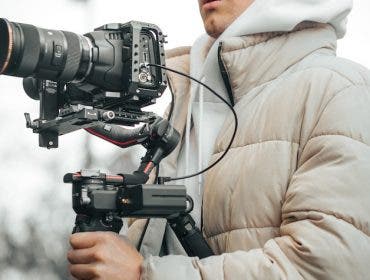Have you ever wondered how news anchors and television reporters deliver information seamlessly on camera? It’s all thanks to teleprompters. These display devices enable a presenter to read from a prepared script or speech while maintaining eye contact with the camera at all times. This gives viewers the impression that the presenter has memorized a speech or is speaking spontaneously since they don’t have to look down or to the side, which is usually the case when reading from a written document or cue cards.
Television presenters, world leaders, and public speakers regularly use teleprompters to communicate their message without having to glance down at written notes. This enables them to build a stronger rapport with their audience by maintaining natural eye contact throughout the speech.
Recently, the use of teleprompters has broadened to include scripted video production and slideshow presentations. Vocalists also use teleprompters to help them remember lyrics while performing on stage.
So how does a teleprompter work?
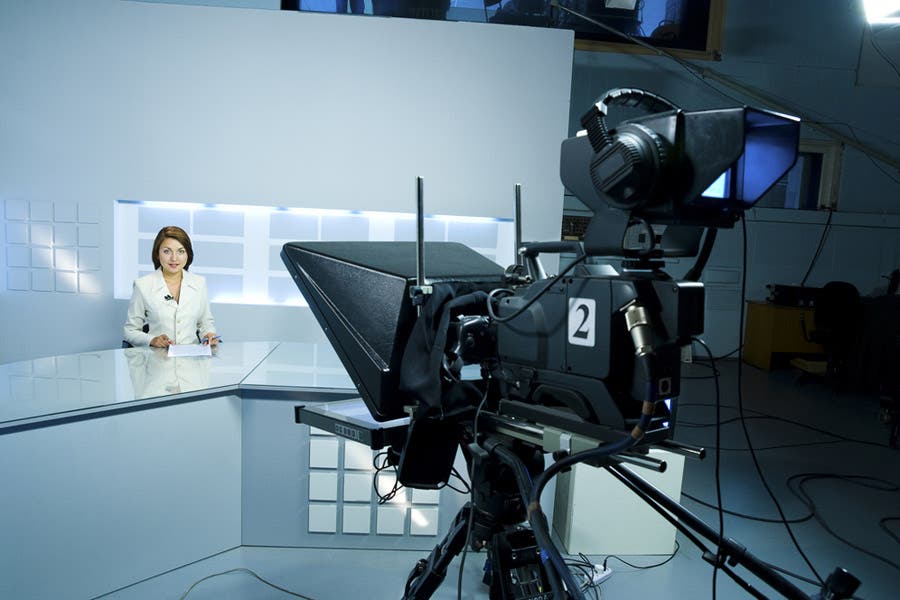
A teleprompter comes with a reflective screen that is sits in front of the video camera lens, as well as a monitor, mounted directly underneath the screen, that displays the script.
The screen is made of reflective glass or an optical beam splitter and is completely see-through on one side and reflective on the other. This allows the camera to shoot through it without visually affecting the video. Meanwhile, the other side of the screen (the side that faces the presenter) is reflective, so anything that shows on the monitor underneath is reflected onto the screen.
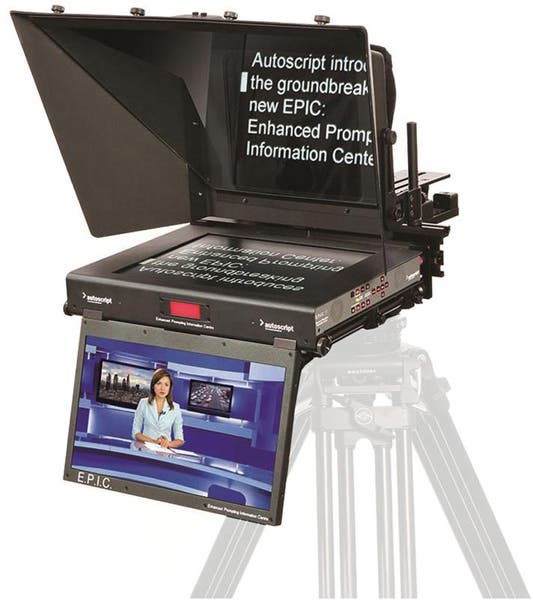
However, in the same way that anything you see in a mirror is flipped horizontally, the image on the monitor would also be backwards on the screen. Therefore, the script must be reversed on the monitor so that when it’s reflected in the glass, the presenter will be able to see it the right way.
In major productions or broadcasts, the teleprompter is normally operated by a crew member, who adjusts the format, scrolling speed, and direction of the text as it appears on the teleprompter screen and ensures a comfortable pace to make it easy for the presenter to read the script seamlessly. The operator has to pay attention to what the presenter is saying so they can follow the latter’s pacing instead of forcing them to speak at a speed that they are not comfortable with. If there is no operator during the shoot, the presenter can use a wireless controller or a foot pedal to control the scrolling speed.
In addition to the fundamental principle of displaying text on a screen, newer teleprompters also give you control over your device by letting you jump to other parts of your script, even though multiple presenters are currently on the broadcast.
What are the different types of teleprompters?
There are three common types of modern teleprompters: camera-mounted, floor or standing, and “Presidential” or podium.
Camera-mounted teleprompters project your script directly onto the camera, which means you’ll be looking straight at the camera lens when speaking. Floor or standing teleprompters are mounted at an angle on the floor, which means you may end up looking down too much, causing you to constantly break eye contact with your audience.
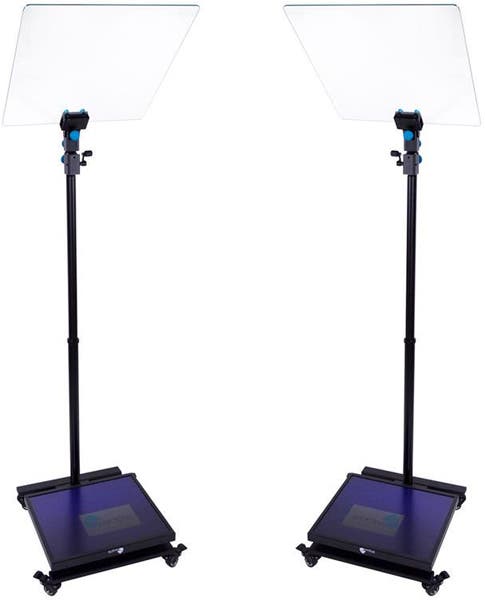
Presidential or podium teleprompters are so named because of the fact that they are the preferred prompting devices of US Presidents like Barack Obama. They work the same way as camera-mounted systems, except that they aren’t mounted to a camera. Instead, these are standalone devices with upward-facing floor monitors, adjustable stands, and glass screens that are tilted at a slight angle and positioned at eye level, making them perfect for speaking from a podium.
Most of these prompting systems normally come in pairs—like the MagiCue Presidential 19″ Prompter —so that one can be placed on either side of the speaker. Each one has a glass screen at the top, which displays mirrored text from the monitor located at the base of the stand. The screens are essentially “one-way” mirrors, so that while the speaker sees the text projected on the reflective glass surface, the audience only sees what appears to be tinted glass.
Mobile teleprompters have also grown in popularity in recent years, particularly when filming outside of the studio. Teleprompting systems like the iKan Elite Universal Tablet & iPad Teleprompter for Light Stand allow users to load or type their script into a teleprompter app on their iPad (or other compatible mobile devices). The latter is then mounted to the system in lieu of a dedicated teleprompter monitor.
Pros of using a teleprompter
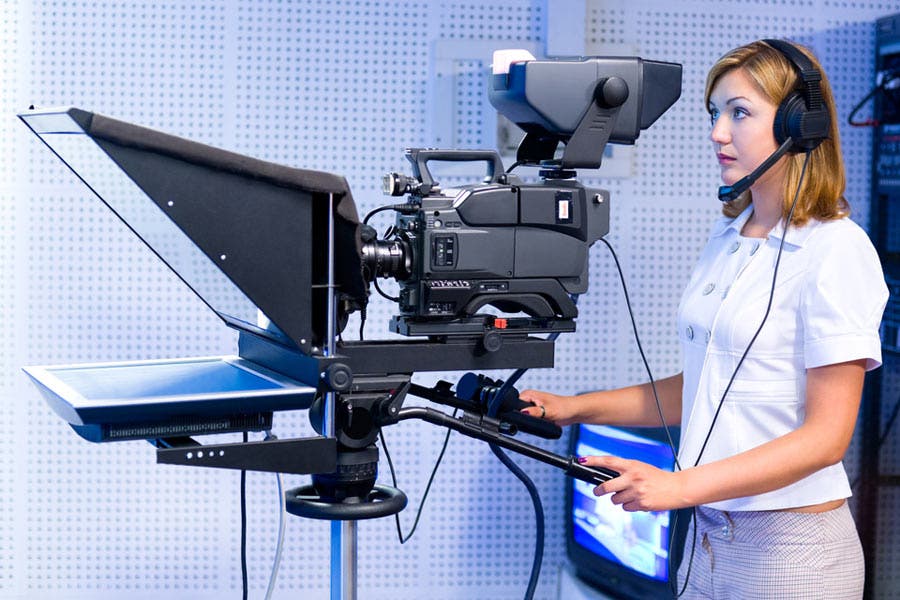
Having a teleprompter on-set gives you and your production team numerous benefits. First, the device doesn’t oblige presenters to deliver their lines from memory, helping them maintain their composure in front of the camera. Hosts and news anchors can focus on being charming and professional, while consistently maintaining eye contact with their viewers or audience.
Second, with the help of a teleprompter, presenters will commit fewer mistakes and avoid using filler words while speaking. This helps shorten production time and minimize costs, as the presentation can be recorded with fewer takes—which is one of the reasons why budding YouTube content creators should consider adding teleprompters to their must-have video equipment list.
During live gatherings and conferences, teleprompters can help you stay on-topic and avoid going over the time limit allotted to you. Having your speech projected on the prompter can also keep you from making glaring repetitions and ensure that detailed information, such as technical specifications and business figures, are presented accurately.
Cons of using a teleprompter
On the other hand, working with a teleprompter during shoots has its drawbacks. If you’re the presenter, you’ll have to rehearse your lines beforehand in order to sound natural in front of the camera. It often takes immense practice to sound like you’re speaking naturally rather than reading off of a teleprompter. Moreover, as teleprompters can only display a few lines of the script at a time, you’ll need to mentally anticipate the next few lines while you’re talking.
And if you’re reading off a screen in front of you during a shoot, your eyes will be moving back and forth. If you’re positioned too close to the teleprompter, viewers will be able to tell that you’re reading a script.
Although it may take plenty of rehearsing and training before you can get the hang of using a teleprompter, once mastered, it will enable you to take control of your presentation and captivate your audience.
Origins of the Teleprompter
The teleprompter has its origins in the post-war period. While film actors were often given weeks or months to memorize their lines, television actors sometimes had only days or hours to do the same. Following the rise of live television, people in the industry realized that a device was needed to help actors remember their lines during shoots. Cue cards were sometimes used to help actors, but relying on ungainly stagehands to flip these cards often led to awkward delays.
In 1948, an executive at 20th Century Fox Studios asked Hubert Schlafly, an electrical engineer, if cue cards could be connected in a motorized scroll, giving actors their much-needed prompts. Using half of a suitcase as the outer shell, Schlafly fashioned a device equipped with belts, pulleys, and a motor to turn a scroll made of butcher paper. The actor’s lines were written on the scroll in large letters—about half an inch in height. In 1949, he patented the device and named it the “TelePrompTer” in honor of the stagehands who helped actors remember their lines.
Since these humble beginnings, the teleprompter has become much more sophisticated in terms of its construction and capabilities, and it remains a staple piece of equipment in live broadcasts and other important productions. While initially invented for television actors, it has become an essential tool for news anchors, politicians, religious leaders, and anyone who has to recite speeches and scripts seamlessly in front of a live audience.
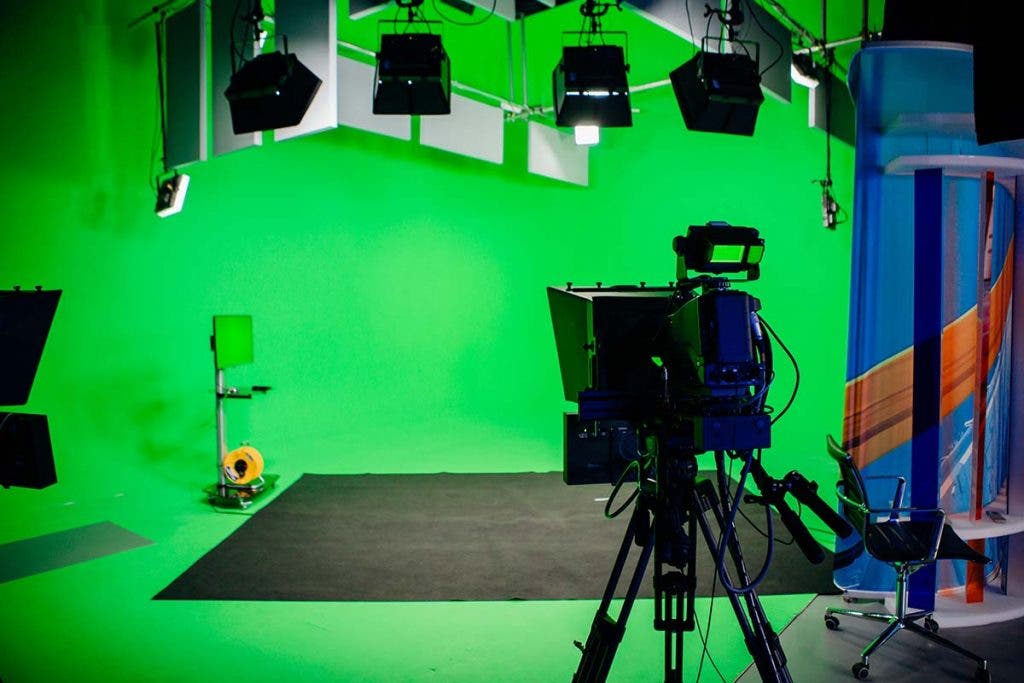
How does a presidential teleprompter work?
If you have watched any presidential speech, you may be wondering what purpose those glass panels in front of the President serve. No, they are not bulletproof glass; they are actually teleprompter mirrored glass.
A Presidential teleprompter operates like most standard teleprompters with two monitors reflecting onto each of two mirrored glass panels at 45 degrees. The monitors in this case are generally on the ground and shoot up into the panel. The mirrored glass panels contain beam splitter glass, meaning that only the speaker will see the words and not any audience members in front of the speaker, nor any TV audience looking at the speaker from the standard frontal camera position.
Usually they come in a pair so that they can be positioned to the right and left of the speaker allowing the speaker, be it the President or anyone else, the freedom to speak to the crowd in a wider way and not only have to look forward.
Who controls the teleprompter?
There are three ways to control a teleprompter. There is the foot pedal method, which allows the speaker to control the text scroll themselves. Next, you can use voice activated teleprompter software — or teleprompter apps. This is a feature that operates by speech recognition and scrolls automatically as you read, analyzing your voice against the text. This can also be good for a solo operator in a very controlled environment, but run a test first to make sure that the speech recognition can understand the speaker. Sometimes it has trouble with accents or with very jargon-heavy text.
The last and most common option is to have a teleprompter operator. This is a person who sets up the teleprompter. They make sure that glass is at an appropriate height for the person reading the text, that the text is legible, and that the speed of the text scroll is comfortable for the speaker to read. When it comes time for the speaker to read the text, they will carefully listen and scroll along making sure to leave the text being read as close to the center of the screen as possible so that the reader’s eyes are looking more or less at the same spot. This also allows for the reader to read ahead a few sentences while they speak.
Having a teleprompter operator allows the speaker to go off script a bit and then return to the text. It allows for a more relaxed and controlled experience.
How do cameras not see teleprompters?
The magic that allows your speaker to see the text being reflected while allowing your speaker to be recorded cleanly without any of the text showing up is due to the beam splitter glass, technically known as dielectric beamsplitter glass. This glass is a special two-sided glass that is created by dipping low iron glass in a vacuum into a solution of dielectric filters. It is then baked on to form a durable and permanent bond. This allows a precise percentage of light to pass through the lens and the remainder to be reflected back towards the speaker.
The most common type of glass is 40R/60T, which means 40% of the light gets reflected back towards the speaker (the text) and 60% (the speaker) gets transmitted to the camera. The glass needs to be at around 45 degrees to the camera and directly in front of it for this effect to work.
